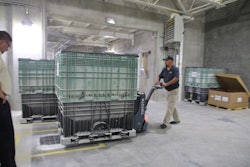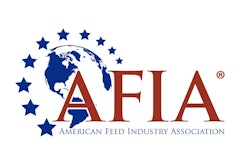
When I was suffering from lower-back pain, the medicine of choice for me was ibuprofen. I was taking 600 mg ibuprofen twice a day for mild pain episodes. Now, 600 mg is 0.6 grams, which is a quantity visualized easier as just a few grains of salt in comparison. The actual pill, however, was elephant sized and weighed several grams. Of course and there was a brand name, but for our discussion we will call it Pain-in-the-Back-Pill or PBP (to protect the innocent).
Now, ibuprofen and PBP are not the same, right? If we read the little print we see a number of carriers and other substances that make up the pill. Let us say the pill weighed 6 grams (of course not, but it gives round numbers). Thus, the concentration of ibuprofen was 10%.
Difference between active nutrient and raw material
Now, let us transfer the same example in our world. Let us usezinc oxide,a source of the nutrient zinc. Zinc is invariable found intrace mineral premixesbecause natural ingredients do not contain enough to meet animal requirements.
Feed grade zinc oxide contains about 75% zinc, with the rest being oxygen (at least that is what chemistry says). There is no way zinc oxide would contain 100% zinc as that would be elemental zinc, which is not useable in our case. This whole discussion might appear boring for many experienced feed professionals, but there is another great number of feed professionals who are not aware of the difference between the active ingredient/nutrient and the raw material.
Going back to zinc oxide, it is often prescribed at 3,000 ppm zinc in feeds for piglets. That is 3,000 ppm zinc from zinc oxide and not 3,000 ppm zinc oxide. In the first case, the inclusion rate of zinc oxide is 0.4% in the final feed (0.4x0.75x10,000=3,000). In the latter case, the inclusion case is just 0.3% zinc oxide, actually giving 0.3x0.75x10,000=2,250 ppm zinc and not 3,000 ppm zinc). In fact, there was an EU country where zinc oxide was regulated by law at 0.3% as the authorities could not discern between the active substance (zinc) and the bearing ingredient (zinc oxide).
Let us now complicate things even better because reality is never easy. Let us know use another raw material, in this caseL-lysine HCl. It is a feed-grade amino acid that is used in many diets formonogastrics. This ingredient contains 78%lysine, the rest being HCl (a strong acid, the same we find in our stomachs).
Now, pure L-Lysine HCl contains 100% L-lysine HCl, but the feed-grade material is not pure. It contains a small amount of harmless impurities — insignificant for our discussion — that are, say, 2% of the total. So, our bag of "lysine" contains 98% L-lysine HCL and 2% other matter. Our calculations then bring actual lysine — the active compound — to 78*0.98=76.44.
的差别很小,但有成分that contain even greater amounts of other matter. Still, a diet that needs to contain 1% lysine as a nutrient formulated with 98%-pure L-lysine HCl will actually contain 0.98% lysine and not 1%. Of course, if the HCl concentration was not deducted from the very beginning, this ingredient added at 1% in the final diet would confer only 1x0.78*0.98=0.764% actual lysine - a huge difference.
Again, many feed professionals are already aware of these calculations and terminology, but it is not a given. In fact, many premixes are formulated withcopper sulphatewithout considering that the actual copper concentration is 25% — let alone the purity of the actual product that varies greatly among suppliers.
In reality, many premixes - the products suffering the most from such miscalculations — are underformulated resulting in products with very appealing prices but with very low performance at the animal level. As we always overformulate such nutrients, these mishaps often go unnoticed resulting in unfair competition, often unbeknown to all.
University trial
I will also bring up an example from a university trial. The student who formulated the feeds failed to account for any and all of the above calculations resulting in causing animal deficiency on a certain vitamin that puzzled the whole research group. Only by combing the feed production records it was finally possible to discern the cause of the problem. Of course, the whole trial — at a great cost and effort — was discarded and had to be repeated. This was a trial in a prestigious university at the highest degree level. I have a feeling this is not the only occurrence as feed manufacturing principles are infrequently taught at any degree level, worldwide.
In closing, let's discuss the false security offered by "book" values used in feed formulation software packages. Before using them, double check the calculations against the actual product.
Not only the active compound concentration must be correct, but also the impurity level must be taken into account for each supplier separately. Going back to the beginning of our discussion, I can attest there are zinc oxide products that contain only 40% actual zinc due to excessive impurities.




















![Optimix Andritz Scaled[1]](https://img.feedandgrain.com/files/base/wattglobalmedia/all/image/2023/05/optimix_Andritz_scaled_1_.645eb7a1ed508.png?auto=format%2Ccompress&fit=crop&h=112&q=70&w=112)
